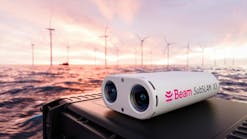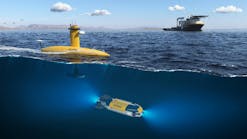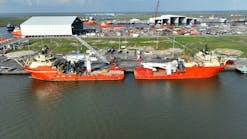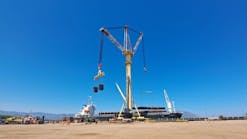Armando Favi
Saipem
In addition to being a member of Eurogif with a representation in the board, Saipem, an Eni company, is also actively partici-pating in the technical activities of various thematic networks.
In particular, Saipem is co-leader of the Search network, an acronym for the TN4 Network Subsea and Downhole Environment-ally Attractive Research and Solutions for Cost-effective Hydrocarbons Recovery. The objec- tive is to coordinate the R&D activities relevant to subsea and downhole production systems within a European network of suppliers, contractors, energy/oil companies, research institutions and universities linked to other interna- tional R&D programs.
Globally, there is a strong trend toward deep and ultra-deepwater (>3,000 m) applications, where the most critical commercial drivers are:
Reduced capital expenditures and operating expenditures
- Net present value improvements to reduce costs of recovery
- Potentially larger reserves and higher recovery rates
- Safe and reliable operations
- Reduced cycle times
- Reduced potential flow assurance, installation and availability challenges.
The industry-added values of the Search network derive from the development of state-of-the-art subsea and downhole production systems for worldwide applications built on a set of commonly recognized standards and regulations. State-of-the-art descriptions identifying functional technology gaps and proposed research will give significant input to prioritizing further research and technology development. The technology leadership attained over the last 20 years by the European oil and gas industry can to a large extent be attributed to the enormous challenges and corresponding achievements associated with developments in the climatic and environmentally demanding North Sea projects context.
The Search network will seek to maintain and improve on such leadership through the creation of an open forum for sharing of experience and know-how among the key European industry players. In addition, the network will produce a European initiative to counter similar programs aimed at solving challenges encountered in deepwater exploitation (such as Deepstar, MoBPTeCh, and Procap 2000), which are moving a large part of subsea and downhole R&D efforts toward Houston and the Gulf of Mexico.
The network objectives will be met by:
- Describing the state-of-the-art for subsea and downhole production systems
- Establishing a common framework for improved European competitiveness in this new and relative unknown technology area
- Assessing functional technology targets and proposing further research qualifications
- Describing requirements and implementation strategies for knowledge transfer
- Making available and disseminating present knowledge within subsea and downhole production systems.
The network is organized into six Thematic Focus Areas with nominated leaders:
- TFA1: Flow assurance
- TFA2: Deep and ultra-deep subsea infrastructures (including their safe use and decommissioning)
- TFA3: Intervention systems – reliable and efficient subsea tools rated for the new deepwater discoveries
- TFA4: Subsea process facilities, to enable production and to mitigate the flow assurance issue or to enhance the production, namely two- or three-phase separators, multiphase boosting systems, dry and wet gas compressors, control instrumentation, and electric power systems
- TFA5: Risk evaluation
- TFA6: Interfacing with other thematic networks in Europe's oil and gas industry.
The Search network consortium consists of 42 registered partners from 10 different members and associated states that represent a major part of the European industry related to technology, design, manufacturing, installation, and intervention of subsea and downhole production systems.
The Search network is jointly coordinated by Kværner and Saipem. These two, together with the five Thematic Focus Area leaders (IFP, Halliburton Subsea, Stolt Offshore, Kværner Oilfield Products, and Kockums Engineering), one representative from the energy/oil companies, one representative from the research institutions (IFE), and a representative from Eurogif, form a steering committee. By including the energy/oil company and research institution representatives on the steering committee, the Search network will ensure that users' and clients' needs are properly accounted for and that proposed R&D initiatives are coordinated and work in conjunction with parallel efforts within the European oil and gas industry.
It is also expected that the Search network will contribute to the European economic development through the focus on new and innovative solutions for export, in particular the deep and ultra-deepwater areas in Gulf of Mexico, South America, Asia Pacific, and West Africa.
Merger creates global offshore contracting force
Saipem has recently completed the acquisition of Bouygues Offshore, another Eurogif member company. This transaction, which has received antitrust clearance from the European Commission, represents the largest cross-border acquisition in Europe in the oilfield services sector. The combination of Saipem's recognized construction capabilities, based on its world-class and technologically advanced fleet, and Bouygues Offshore's powerful engineering and project management expertise, is creating a new, worldwide group with a superior competitive positioning in the provision of EPIC services to the oil industry, with a particular focus on activities in remote areas, deepwater environments, and gas-related projects.
The new group is a truly worldwide contractor, with strong local presence in strategic and emerging areas such as West Africa, the former Soviet Union, Central Asia, North Africa, the Middle East, and Southeast Asia.
The integration of Saipem and Bouygues Offshore is facilitated by seven years of successful cooperation through the SaiBos joint venture, and other projects performed jointly.




